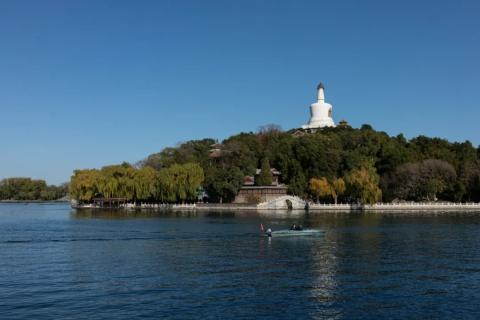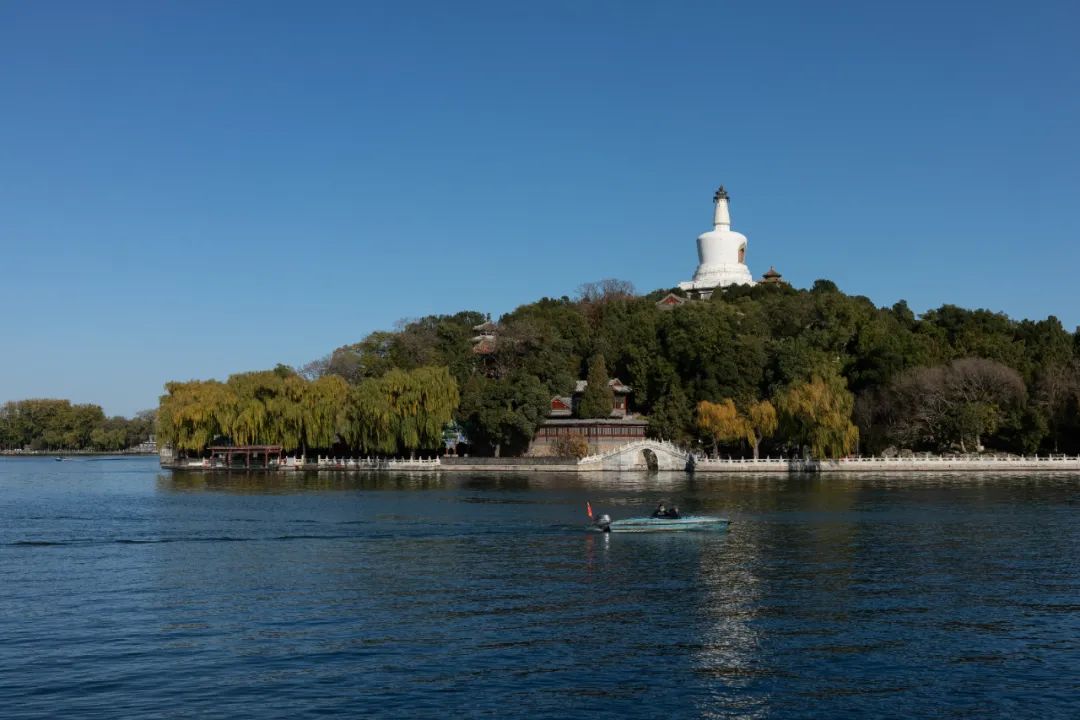
I have been in Beijing for more than 20 years and have been to Beihai Park once before. It was because a classmate was getting married, and the wedding banquet was held at Fangshan in Beihai Park. After dinner, I still remembered the details of the wedding, but I had no impression of what Beihai Park looked like. On weekdays, when passing by Jingshan Street, Beichang Street or Wenjin Street, you can see the White Tower on Qionghua Island from a distance, overlooking the cruise ships on the water.

I was walking in the park that day, and not far after entering the west gate, I saw the stone tablet of the Ten Thousand Buddhas Tower. The stele was completed in the 35th year of Qianlong's reign (AD 1770). It was originally built in front of the Ten Thousand Buddhas Tower built by Emperor Qianlong to celebrate his mother's 80th birthday. During the Gengzi National Disaster in 1900, the Ten Thousand Buddhas Tower was occupied by the Japanese army. The Records of the Three Seas, written in the early years of the Republic of China, recorded that the Buddha statues in the Ten Thousand Buddhas Tower were "carried back to their home country by the Japanese army, and not a single one was left." After entering the Republic of China, due to lack of necessary maintenance, the Ten Thousand Buddhas Tower gradually declined. In 1987, the stone monument was moved to its current location, south of Xiaoxitian. The four sides of the stele are engraved in Chinese, Manchu, Mongolian and Tibetan seals with Emperor Qianlong's "Poetry to Commemorate the Completion of the Ten Thousand Buddhas Tower".

The Ten Thousand Buddhas Tower Stone Tablet To the north is Xiaoxitian. The building was first built in the 33rd year of Qianlong's reign in the Qing Dynasty (1768) and completed in the 35th year of Qianlong's reign in the Qing Dynasty (1770). It was also built by Qianlong to pray for his mother's birthday. The main building is Elysium, with a total area of 1,200 square meters and a beam span of 13.5 meters. It is the largest square pavilion-style palace building in China. The windows and nan fans on all sides of the palace have fine patterns. A gold plaque hangs high in the palace with the inscription "Elysium" It is the imperial pen of Qianlong, and above it is the golden octagonal dome dragon caisson. The hall is surrounded by water and is accessible by bridges. There are glazed archways in the east, west, and south, and a small square pavilion in each corner. There is a Crescent River in the south, and a stone bridge with carved railings.

However, this day coincided with Xiaoxitian's maintenance, so the caisson could not be seen. I could only take a look at the building inside from outside the door.

Going further north, we arrived at Kuai Xuetang. This building was originally a two-entry courtyard with two main halls, Chengguan Hall and Yulanxuan.

In the forty-fourth year of Qianlong's reign, Emperor Qianlong obtained a copy of the stone carving "Kuaixue Shiqingtie" written by Wang Xizhi of the Jin Dynasty, written by Zhao Meng, a calligrapher of the Yuan Dynasty. For this reason, he ordered someone to build a golden nanmu hall and named it "Kuaixue Hall" . The verandahs on the east and west sides of the courtyard are embedded with 80 ink stone inscriptions by 20 calligraphers from the Jin Dynasty to the Yuan Dynasty. Forty-eight squares are embedded in them. Among them, "Kuaixue Shiqingtie" by Wang Xizhi and "Kuaixuetang Ji" by Emperor Qianlong are the most famous. .

To the east of Kuai Xuetang is the Brahma Realm of the Western Heaven, also known as the Great Western Heaven. This place was originally the Xitian Chanlin Lama Temple in the Ming Dynasty. It was rebuilt in the 24th year of Qianlong's reign (1759) and expanded to the west. When I went there, there were almost no people around and it was very quiet.

